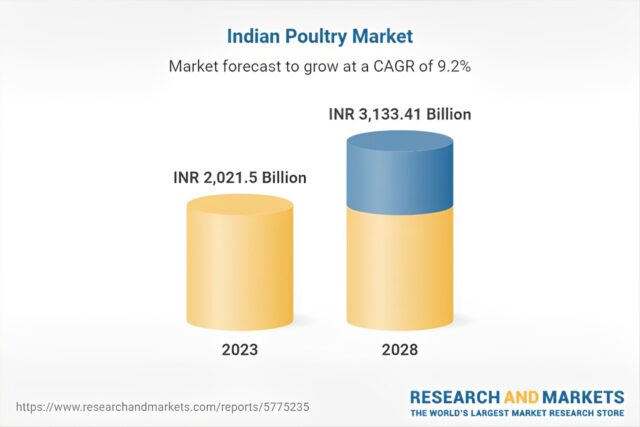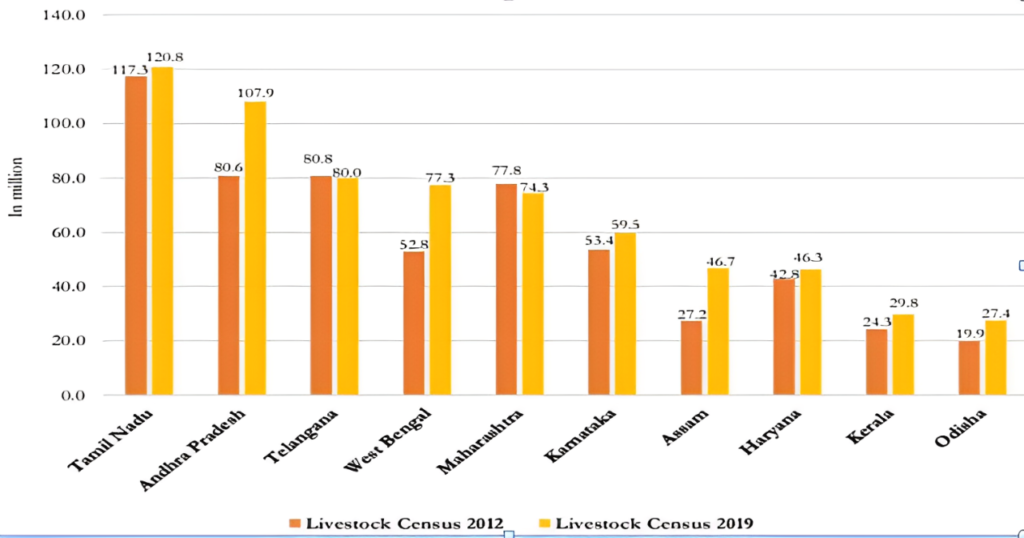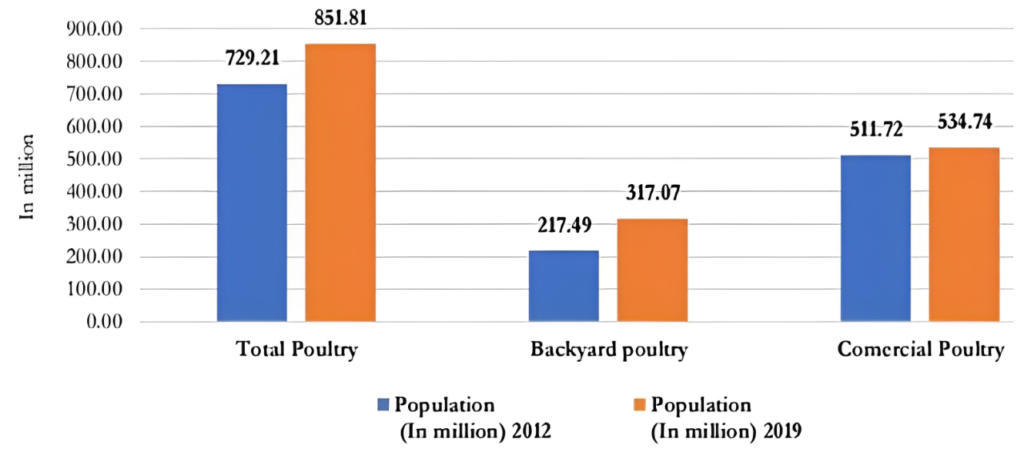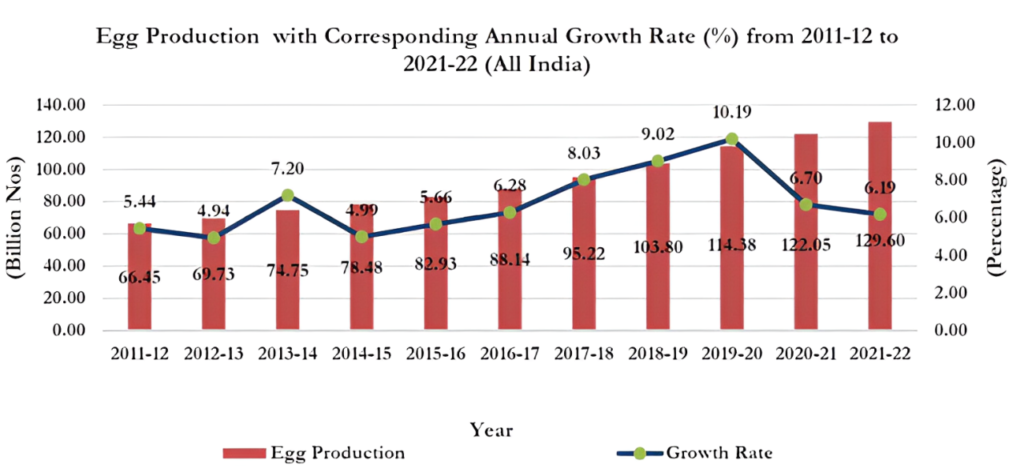
JAI PRAKASH and B.L. SAINI

Introduction
Poultry production in India has taken a quantum leap in the last four decades, emerging from conventional farming practices to commercial production system with state-of-the-art technological interventions. Poultry production at present is the fastest growing sub-sector in Indian agriculture with a quantum jump in both poultry production and productivity. Inspite of very fast growth attained by corporate poultry, rural poultry rearing of native chicken has not achieved significant position in poultry production. The poultry sector in India has made outstanding contribution to National Economy and Food Security System by keeping protein hunger at bay. Egg is a wholesome, nutritious food with high nutrient density because, in proportion to their calorie count, they provide 12% of the daily value for protein and a wide variety of other nutrients like vitamins, essential amino acids and minerals such as vitamin A, B6, B12, folate, iron, phosphorus, Selenium, Choline and zinc etc. along with various other important ingredients so crucial for growth and good health. Protein in the nutrition is one of the most important health indices that affect children’s growth and development.
More than 80 percent of India’s poultry output is produced by organized commercial farms. Major poultry companies have vertically integrated operations which comprise approximately 60-70 percent of the total chicken production. This is the major component in changing production and marketing scenario of poultry and poultry products. The size of the poultry farms varies significantly from small farms with just 200 birds to large farms of more than 50,000 birds. Most of the poultry farms are simple open sheds while only a few large poultry integrators have controlled-environment housing with automatic feeding and drinking systems. High capital costs and unreliable power supplies restrict large scale adoption of the controlled environment poultry barn model in India.
Poultry population growth –The total poultry has increased by 16.81% and the total poultry population is 851.81 million during 2019.Over 45.78% increase in backyard poultry and total backyard poultry is 317.07 million in 2019 and the commercial poultry has increased by 4.5% and the total commercial poultry is 534.74 million.

Fig.1. Poultry population in major states (2012 & 2019)

Fiig.2. Poultry population of country (Backyard and Commercial in 2012 & 2019)
Egg Production growth – Currently, the total Poultry population in our country is 851.81 million (as per 20th Livestock Census) and egg production is around 129.60 billion during 2021-22. The per capita availability during 2021-22 is around 95 eggs per annum. The Egg production has shown positive growth as 6.19% during 2021-22. Egg production and the corresponding annual growth rate (%) per year of the country from 2011-12 to 2021-22 is shown in the graph given below:

Fig. 3.
Broiler meat production & consumption pattern
Broiler production is mainly concentrated in the states of Tamil Nadu, Andhra Pradesh, Maharashtra, Uttar Pradesh, and Telangana. The broilers in India are usually reared for 35-40 days to a market weight of 1.8 to 2.2 kg. Supply-demand situations generate significant seasonal fluctuation in broiler prices: prices may rise in summer due to reduced production but decline during certain Hindu festivals. The major industry players attempt to support prices by reducing chick placements when demand falls. Birds’ placement depends on feed prices, status of disease outbreaks, financial status of farmers and the profitability related to the prevailing demand and price of final product in the market. Feed price constitutes around
Poultry Industry Challenges & Risk in India
There are many challenges like –
- Transportation of organic matter
- Inefficient waste management
- Way of disease diagnosis
















